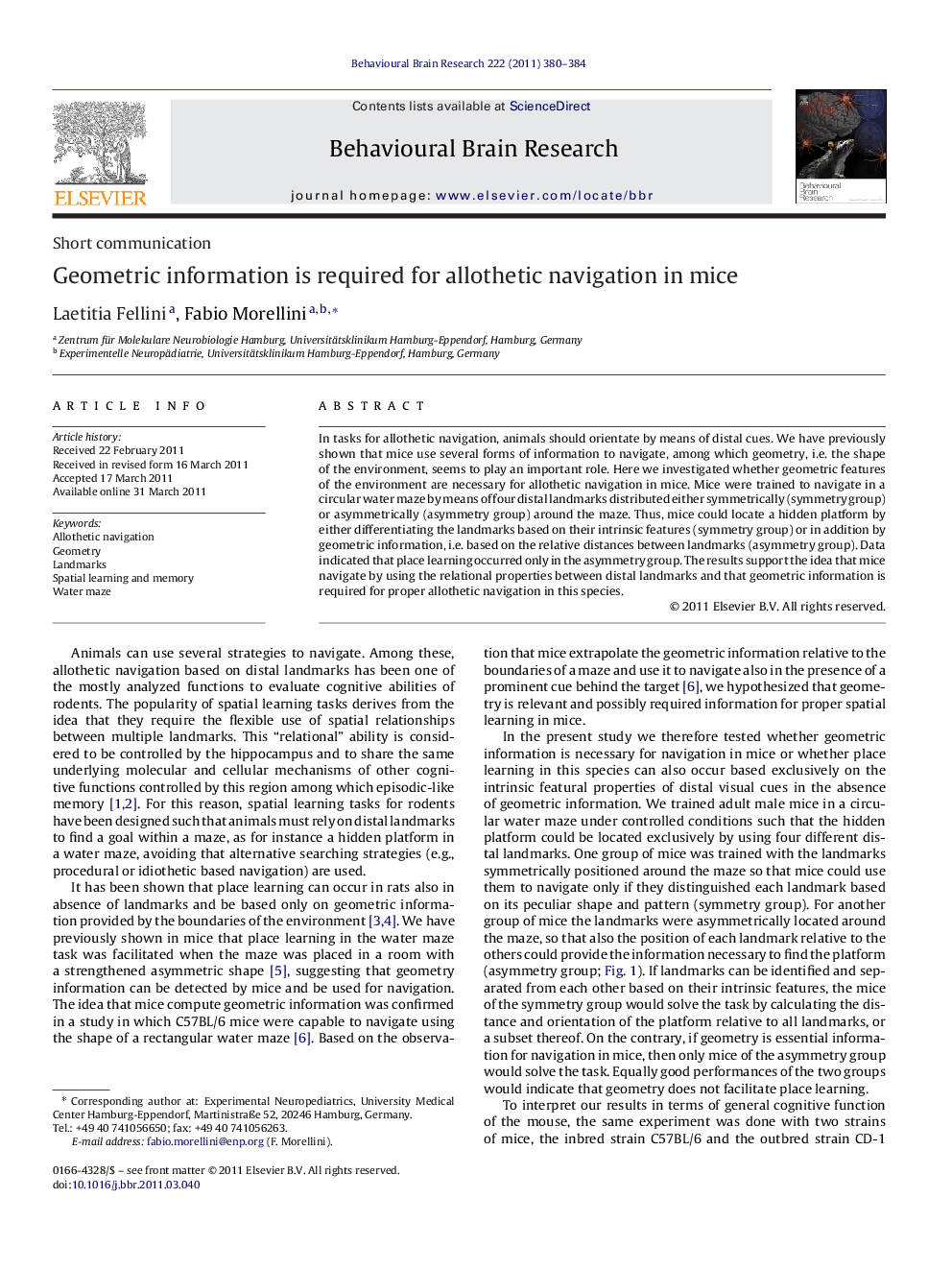| Article ID | Journal | Published Year | Pages | File Type |
|---|---|---|---|---|
| 6259741 | Behavioural Brain Research | 2011 | 5 Pages |
In tasks for allothetic navigation, animals should orientate by means of distal cues. We have previously shown that mice use several forms of information to navigate, among which geometry, i.e. the shape of the environment, seems to play an important role. Here we investigated whether geometric features of the environment are necessary for allothetic navigation in mice. Mice were trained to navigate in a circular water maze by means of four distal landmarks distributed either symmetrically (symmetry group) or asymmetrically (asymmetry group) around the maze. Thus, mice could locate a hidden platform by either differentiating the landmarks based on their intrinsic features (symmetry group) or in addition by geometric information, i.e. based on the relative distances between landmarks (asymmetry group). Data indicated that place learning occurred only in the asymmetry group. The results support the idea that mice navigate by using the relational properties between distal landmarks and that geometric information is required for proper allothetic navigation in this species.
⺠Does place learning occur in mice when geometric information is not available? ⺠No learning occurs with landmarks symmetrically distributed around a water maze. ⺠Place learning occurred in mice trained with asymmetrically distributed landmarks. ⺠Mice require geometric information for allothetic learning in the water maze.
